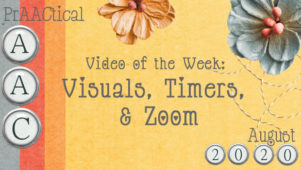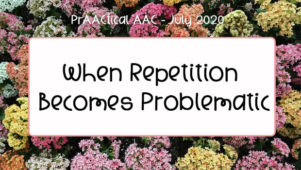5 Tools & Tips for Making Transitions Easier

/Visual_support_tix.png)
Transitions can be hard for everyone, whether it is turning off the TV to finish grading papers or leaving a favorite place to go run some errands or following through to finish cleaning out the garage. For people with significant communication difficulties, there can be additional challenges. Here are some of our favorite tools and strategies for making transitions easier for everyone.
–
- Visual Schedules: Our hands-down favorite way of helping people transition smoothly is to make the expectations visual and explicit. Lots of info on making this strategy successful here and here.
- Timers, timers, and more timers! We love them because, once the routine and expectations are established, they work so beautifully in so many situations.
- Social stories:Well-written social stories shared via high quality intervention can go a long way in preventing or minimizing transition issues.
- Transition items: Lots of families, teachers, and SLP have had success using objects to make movement from one (preferred) activity to another (non-preferred) activity more palatable. Preparing transition materials in advance makes it easier to implement this strategy.
- Predictable transition cues and safety signals: We all handle situations more gracefully when we know what’s coming up. Using explicit cues – verbal and visual – gives learners advance notice that the current activity is about to come to a close (e.g. 3 more turns, and then we’re finished; 5 more minutes and then…). Consistent use of a first/then visual support is another way to make transitions easier for everyone.
–
What tips and tools have worked for you?
–
Filed under: PrAACtical Thinking
Tagged With: schedules, transitions, visual schedule, visual supports
This post was written by Carole Zangari




